The Heidelberg Edge Perimeter, introduced at July's World Glaucoma Congress in
For more information, call 1 (800) 931-2230 or visit heidelbergengineering.com.
Storz DSEK Instruments
Bausch & Lomb has added four more instruments to its line of tools for use in DSEK. The E2039 Carlson DSEK Graft Forceps, developed by Alan Carlson, MD, are intended to grasp the graft for insertion into the anterior chamber. The platforms at the tip provide a secure grip, and a platform at the rear of the arms provides a mechanical stop to prevent crushing the tissue. 
The E2015 Snyder Stripping Forceps, designed by Michael Snyder, MD, are angled upwards to grasp the edge of Descemet's membrane to complete the stripping technique in DSEK. The iris stop feature allows the surgeon to grasp the membrane without grasping iris or other ocular structures.
Two DSEK instruments have been developed by Mark Terry, MD. The E3124 Terry Non-Irrigating Scraper is used to gently roughen the inner stromal surface of the cornea in preparation for the DSEK graft. The ET3126 8.5-mm and 9-mm Corneal Markers are designed to provide a template for scoring and stripping Descemet's membrane during the procedure.
For information, call 1 (800) 338-2020 or visit storz.com.
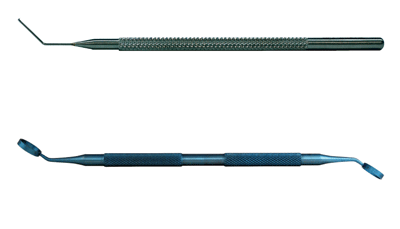
Topcon Enhances IMAGEnet Software
Topcon has launched a new Color Balance Tool for its IMAGEnet Digital Imaging Software. The tool allows users to adjust the histogram curves of the individual red, green and blue channels of the retinal images at capture. Several studies report evaluation of the histogram curves of the individual channels have been used as an objective method of analyzing the color composition and balance of digital fundus images. According to the company, the Color Balance Tool aims to address these clinical research requirements and to help the end user achieve more detail of pathology, better illumination and better overall color balance of the images. After capturing a color fundus image, the photographer can see the effects of adjusting color in a preview image before taking additional photographs of the patient's eye, reducing the trial-and-error usually necessary to fine-tune adjustments to color and exposure. The tool can also be used in monochromatic imaging.
For information, call 1 (800) 223-1130 or visit topconmedical.com.
Tools from Rhein Medical
The Ide DSAEK 30-ga. Cannula, developed with Takeshi Ide, MD, PhD, from Rhein allows surgeons to easily and consistently aspirate as much fluid as possible from the host-and-donor corneal interface, according to the company. The instrument is available in limited depths of 0.9 mm, 1.2 mm and 1.5 mm. The cannula helps corneal endothelium work better for interface adhesion after DSAEK. The limited-depth feature eliminates the possibility of pushing the cornea down into the anterior chamber while pushing the needle. The instrument is reusable, autoclaveable and guaranteed for life with a 30-day, no-obligation surgical evaluation. 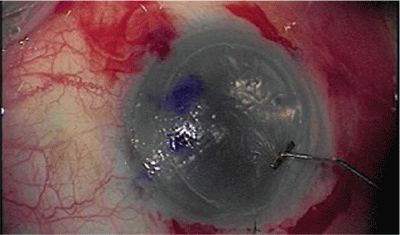
Rhein has also released four new titanium speculums. The instruments include a lifetime guarantee and are available for a 30-day surgical evaluation. These styles are available: Lieberman Speculum, V-Wire, Temporal Fit; Steinert Nasal Speculum, Nasal Fit; Kershner Reversible Speculum, Temporal & Nasal Fit, Solid Blades; and Lieberman Open Wire Kratz Style Speculum, Temporal Fit. For information, call (813) 885-5050.
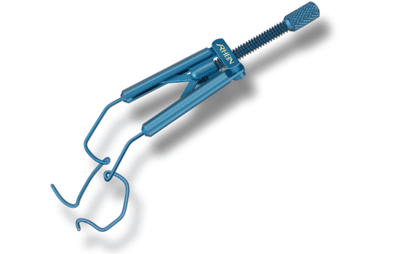
ASICO Slims Down
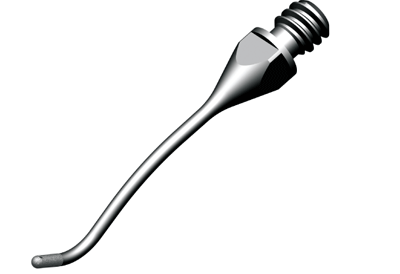
ASICO has debuted its thinnest micro-coaxial I/A tips. These 22-ga. tips are designed to work in conjunction with Alcon's Ultra and Nano sleeves. The 0.3 mm x 0.2 mm oval port provides better occlusion, and the sandblasted surface polishes the capsule. They are available in three shapes: curved; straight and bent. For information, call 1 (800) 628-2879 or visit asico.com.
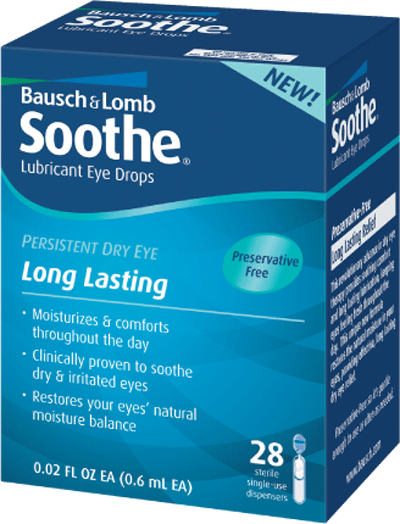 B&L Soothes Dry Eye
B&L Soothes Dry Eye
Bausch & Lomb has released Soothe Lubricant Eye Drops Long Lasting Relief Preservative Free, a new formulation of its over-the-counter drops. For dry-eye relief, this formulation uses a hydrophilic polymer to interact with the eye's mucin layer. According to the company, the polymer-mucin interaction stabilizes and rebuilds the tear film by forming a scaffolding system, allowing water and the product's active demulcent ingredients to be retained on the cornea. For more information, visit bausch.com.
Biofinity Comes to
CooperVision has released its Biofinity silicone hydrogel contact lenses for daily wear in the
Aquaform technology also incorporates longer-chain siloxane molecules, which means less siloxane needs to be incorporated into the lens material to achieve high levels of oxygen transmissibility. The resulting softer, more wettable material gives better all-day comfort, according to the company. The aspheric front surface lens design improves visual performance, and the single base curve and back surface design enable fast, easy alignment and a quicker fitting process. A patented molded round edge reduces conjunctival interaction, giving patients continuous wearing comfort. For information, visit coopervision.com.



